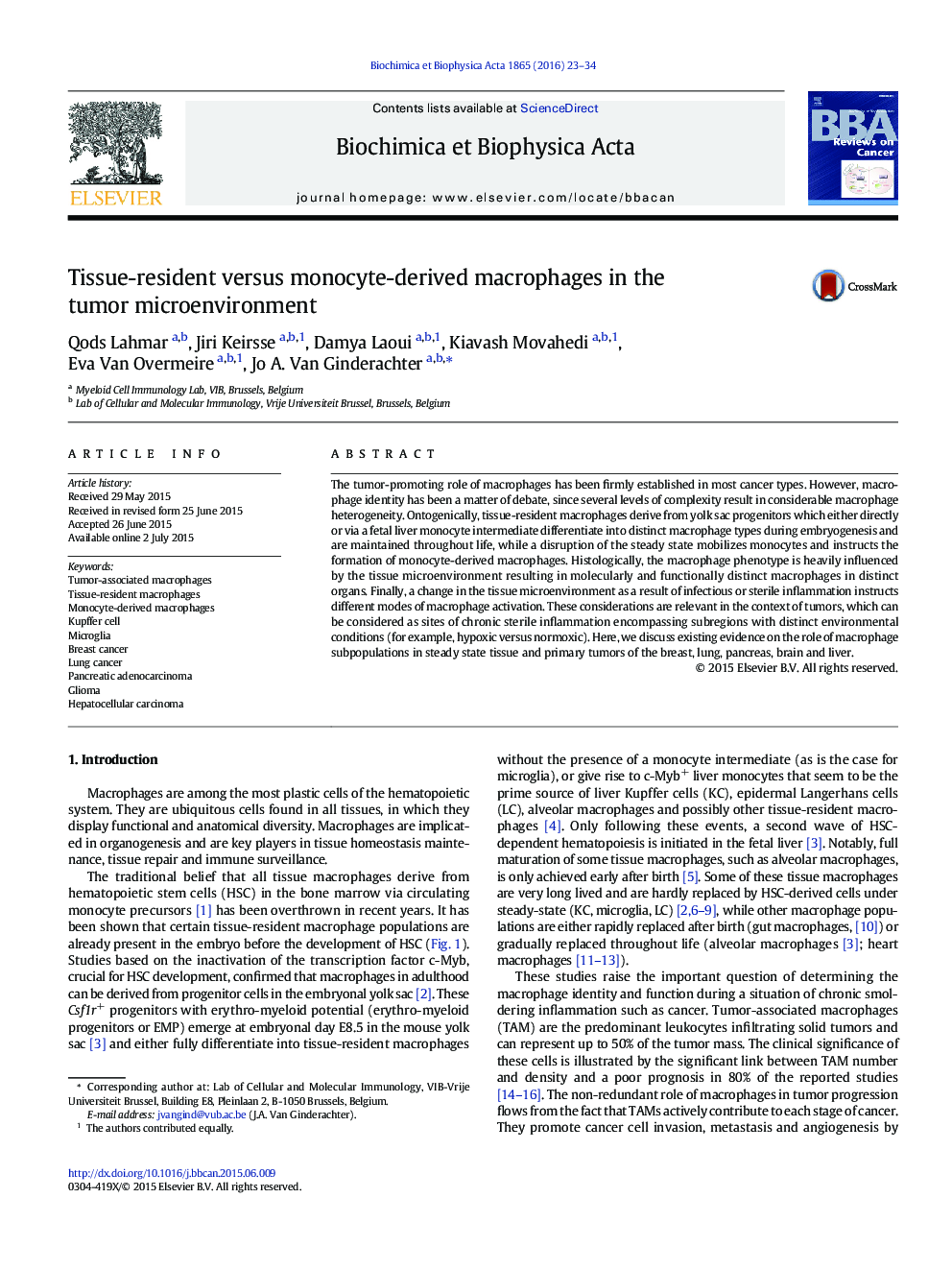| Article ID | Journal | Published Year | Pages | File Type |
|---|---|---|---|---|
| 2100835 | Biochimica et Biophysica Acta (BBA) - Reviews on Cancer | 2016 | 12 Pages |
•We describe the presence of ontogenically distinct macrophages in steady state organs.•We discuss the role of ontogenically distinct macrophages in different cancers.•We discuss the role of differentially activated macrophages in different cancers.•We discuss microenvironmental triggers that drive macrophage phenotype in tumors.
The tumor-promoting role of macrophages has been firmly established in most cancer types. However, macrophage identity has been a matter of debate, since several levels of complexity result in considerable macrophage heterogeneity. Ontogenically, tissue-resident macrophages derive from yolk sac progenitors which either directly or via a fetal liver monocyte intermediate differentiate into distinct macrophage types during embryogenesis and are maintained throughout life, while a disruption of the steady state mobilizes monocytes and instructs the formation of monocyte-derived macrophages. Histologically, the macrophage phenotype is heavily influenced by the tissue microenvironment resulting in molecularly and functionally distinct macrophages in distinct organs. Finally, a change in the tissue microenvironment as a result of infectious or sterile inflammation instructs different modes of macrophage activation. These considerations are relevant in the context of tumors, which can be considered as sites of chronic sterile inflammation encompassing subregions with distinct environmental conditions (for example, hypoxic versus normoxic). Here, we discuss existing evidence on the role of macrophage subpopulations in steady state tissue and primary tumors of the breast, lung, pancreas, brain and liver.
